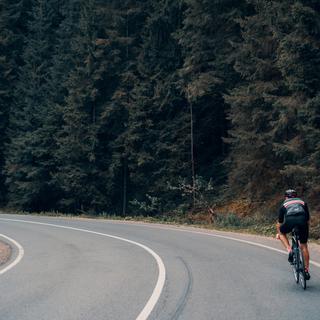A hundred kilometers is a psychological mark for many new cyclists, a fundamental mark that they want to overcome. And although it seems that this is a lot, in fact, it's quite a normal distance, which does not pose any special difficulties. But do not assume that you can just sit on a newly acquired bike and ride a hundred kilometers, although some do that :) I personally drove the first hundred somewhere in the second year of more or less active cycling, and I'm not shy about it :)
Although cycling 100 km sometimes seems like a stunning goal, if you break your bike training into a series with a gradual increase in distance over 2-4 months, then everything becomes much easier. You sill should remember that such a distance is stressful for the body, and the body experiences less stress from the loads that it receives in small amounts regularly. Also, do not forget that your trip will increase the load on the joints, so if there were problems with them, it is better to reduce your ambitions - recovery can be very long.
How to train before a 100 km ride?
The key task of preparatory training is to adapt the body to unusual loads. You must launch adaptation mechanisms and use them as competently as possible. There are a few basic rules that you should follow:
- Do workouts 3-4 times a week. Moreover, training does not have to be on a bicycle - any aerobic exercise that increases the tone of the body and gives a load on the legs is suitable. But you still need to ride at least 1-2 times a week.
- Better to start with simple trips at an average pace of 0.5 - 2 hours.
- No need to try to cycle for 100 km in training. Consistency over intensity and the gradual increase in distance from a trip to trip. This mode allows you to avoid unnecessary injuries and overwork when you'll ride a hundred.
- It is advisable to make a training trip for 50-60 km two weeks before the trip to the hundredth. In fact, fifty kilometers is a rather tangible distance, after which fatigue begins to be felt. After you cycle 50-60 km, 100 km won't seem more difficult for you.
- You could increase distance and time in the saddle from week to week by small steps but a better approach is to keep the same time and distance for 3-4 weeks in a row and than increase it for 20%. This way you give enough time for your body to adapt.
- Forget about overcoming yourself and "one more kilometer." Stop when you are still feeling fresh and not fatigued.
- No soreness. If you feel muscle pain, you went too far. Reduce your load.
- Patience is your friend.
Of course, you can not give a damn about preparation and take it "right off the bat", but it is your health and you decide.
Of course, you can not give a damn about preparation and take it "right off the bat", but it is your health and only you decide.
What you should take with you for a 100 km ride?
In addition to the proper training of your body and spirit, you should not forget about the "hardware", as well as fuel. 100 km is a long distance and, most likely, you will go out of town. Anything can happen on the road, so it’s better to prepare for the main troubles. In my experience, technical problems could break you psychologically much more than the load itself.
Here's a short checklist:
- Make sure that all components and parts of the bike are functioning properly and that they are not making unpleasant sounds or other symptoms of problems. If you have problems, go to a bicycle service.
- Necessarily take a spare tube with you or even two tubes. This is in addition to a set of patches. There are times when the patch does not want to stick or does not hold pressure. It was a surprise for me to encounter such a situation 50 km from the house - it turns out that at a temperature of more than 30 degrees the glue did not work.
- To ride such a distance without a pump is suicide. Buy a good pump!
- Fuel. Although the bike and environmentally friendly transport, your body will need fuel. You need the equivalent of a good breakfast, a couple of bananas or an energy bar. Try to choose an easily digestible sweet food, as this will reduce the energy costs of digestion. Believe me - you will feel the difference.
- A lot of water! It is clear that it is difficult to carry with you, but at least 1 liter should be with you.
- Plan the route. See if there are gas stations and shops along the way - this will help you replenish the water along the way and buy some goodies if needed.
- Tell your relatives where are you going. Not only pleasant events can happen, so other people need to know where you are.
- Charge the phone. This will not only allow you to record the route to Strava, but also call in case of anything. An extra power bank is good option too.
- Take the cash. There are no card terminals in rural grocery stores. And in the case of a hitchhiking need, you can have extra negotiation points (although drivers often help you for free).
The list was pretty impressive, but far from complete. I highlighted the most important things only. If any of the points are hard to follow for you, then ride in a group with other cyclists - this will not only allow you to better know other people but also avoid unnecessary risks.
